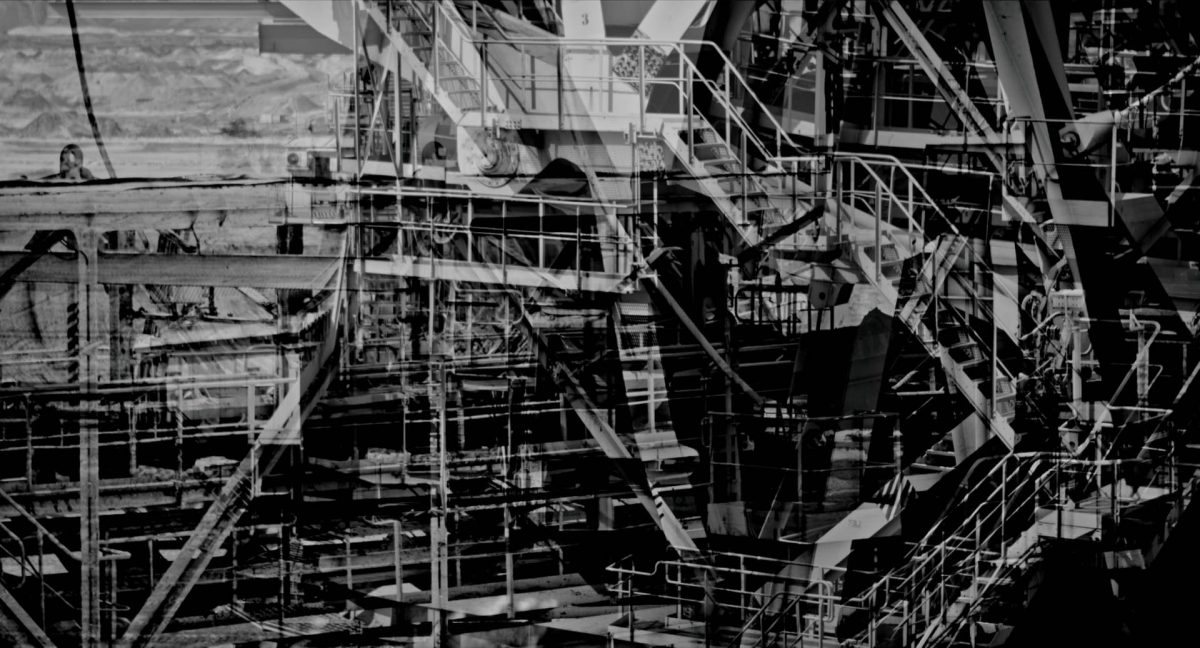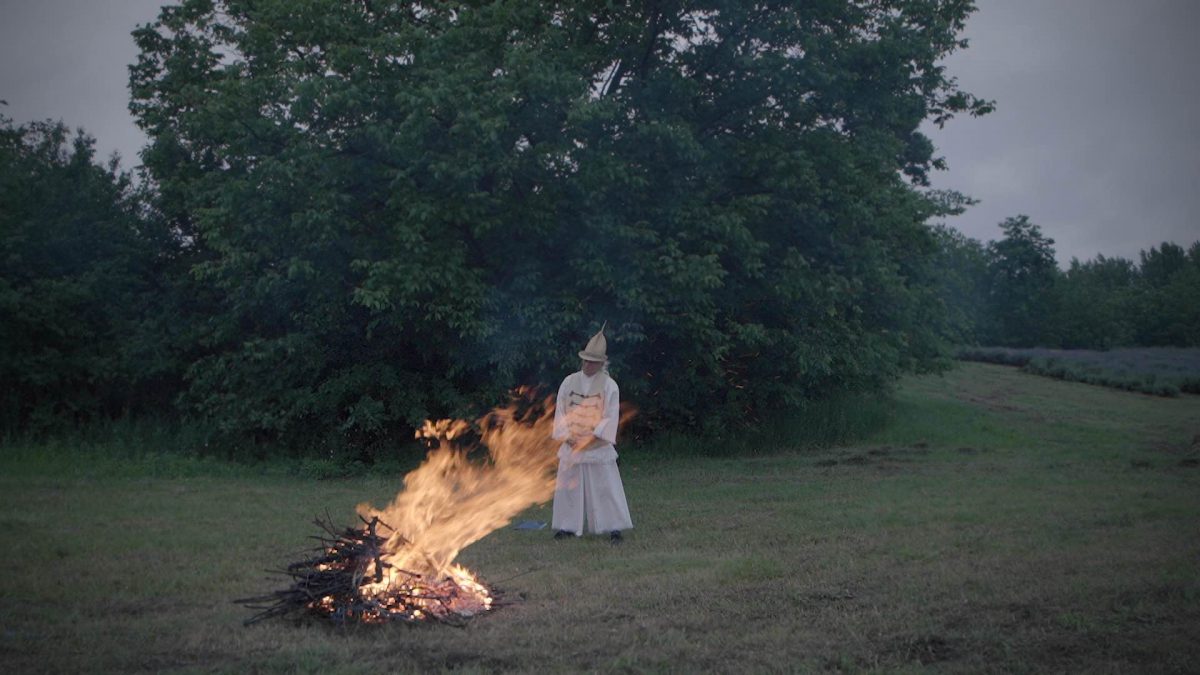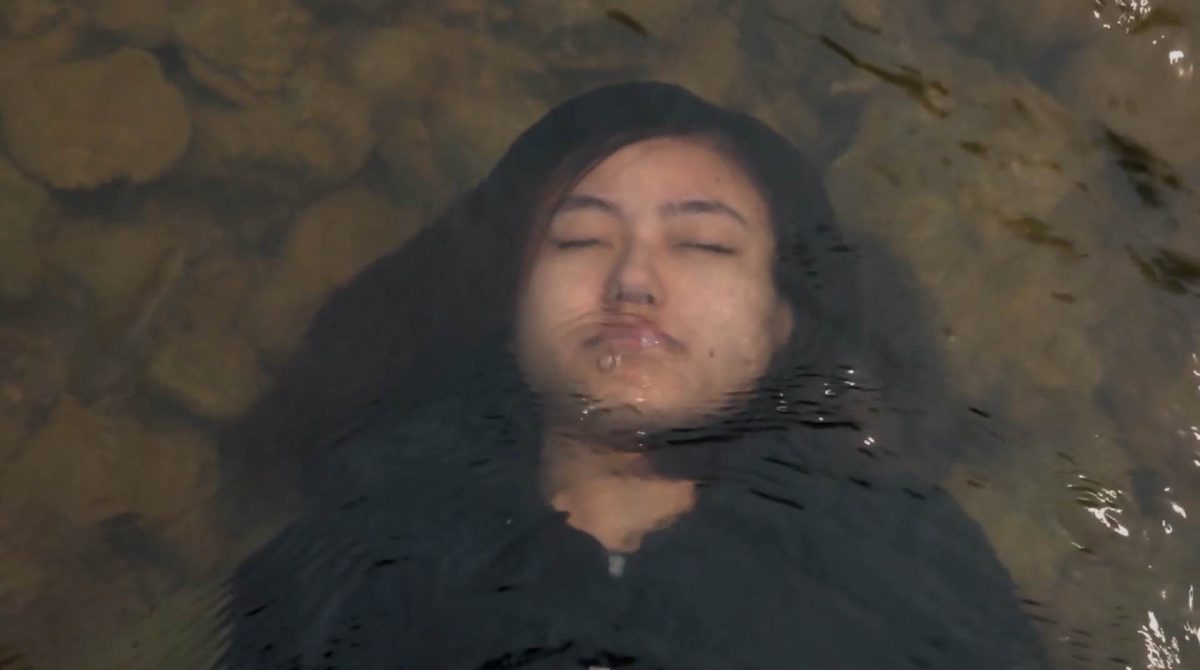Film Criticism Workshop
A Triptych on Displacement and Destruction
Entropy, It’s Just Another Dragon, and Broken by Chang Yu-sung, Taymour Boulos, and Nan Khin San Win
On paper, the three shortest films in the 2021 Yamagata Documentary International Film Festival may seem the furthest away from each other: with each filmmaker hailing from three different film schools in three different countries. But upon further examination, these filmmakers each craft a story that attempts to make sense of a violent milieu, and the results of what they’ve captured become a potent source of discussion. When screened together as a 39-minute triptych, the selection becomes a poignant mosaic that reflects and refracts truths about displacement, isolation, and political negligence in the increasingly divided and globalized world.

The first of the films, Chang Yu-sung’s Entropy, observes a dying coal mine in Poland on its last leg of operations. The black-and-white images of machines, minerals, and men slowly fade into one another, constantly transforming, paralleling the changes in the topography made by the industry. In creating visual overlaps between the environment and its occupants, the film merges the destroyer and the destroyed, becoming a surprising form of self-mutilation by humans onto the mountain.
Deprived of dialogue, the film uses a heavy soundscape—whispers in the air, static from the radio, the pitter-patter of a flurry of pebbles falling—reminiscent of the sustained, anxiety-inducing humming that underscores every successful horror film. A disorienting yet eerie synesthetic experience, Entropy creates fractals of the mining industry, turning landscape and all its components into visual snowflakes, symbols of pollution. Previously the ninth largest coal producer in the world, Poland has begun phasing out its mines in solidarity with climate and health movements. But as the film concludes, as the screen fades to white and the sound of a heartbeat stops, we are reminded that the death of the industry also means a death of the people who rely on it.

The second of the films, Taymour Boulos’s It’s Just Another Dragon, is much harder to decode than the first. Divided into eight chapters, a prologue and an epilogue, the film follows an unseen Hungarian oral storyteller and a Lebanese filmmaker who entrust each other with their stories. Each chapter is a series of static shots: a river flowing, a subway station, a nearly empty tanning salon, the Chinese Dragon created by Gábor Miklós Szőke, the platform lifts at a Hungarian railway station, a pair of fencers dueling, three girls practicing a dance routine in front of a store’s glass window, an image of a king’s epitaph, a pingpong game, an eerie park in the nighttime, and a man in a cloak burning wood in the forest.
Perusing the internet reveals that dragons have had a drastic change in meaning in Hungarian literature. Initially a symbol of unity that was, in some regions, born through the transformation of another being, these later on became a symbol of evil to be vanquished. However, in postmodern Hungarian literature, the dragon is no longer treated like any beast but rather as a delicate and emotional being or, at times, an outcast.
The visuals are layered with a rhythmic form of oral storytelling from the two protagonists, each narrating their backgrounds: the 1970s civil war that caused the rail transport system in Lebanon to cease, the 2020 ammonium nitrate explosion in Beirut, the ethnic conflicts between Hungary and Romania. The images are peaceful compared to the stories being told, stuffing the voiceovers with an almost fairytale-like quality. The epilogue acknowledges that the subjects are aware that they are being filmed, consenting to the process of retelling these stories, a dialogue across space and time.

The final film, Nan Khin San Win’s Broken, is the most straightforward of the three: both in its narrative and its form. Taking on many elements of traditional documentary filmmaking, it gives a voice and a body to the people, specifically the women, in the Kayah State—survivors of domestic, economic, and sexual violence due to the area’s intense militarization. Fathers step on landmines, statues are defaced and damaged, girls are safeguarded to no avail. Even in their sleep, they dream of violence, their subconscious absorbing and manifesting the violence around them.
War reveals itself differently to men and to women, and they relish their momentary sources of peace: sitting on tree stumps in the middle of clearings created through deforestation, submerging themselves in the river, or lying down in the mud until there is a need to get up. Their behaviors and self-perceptions as individuals and as a community have inevitably changed. And though wounds of the body heal over time, the wounds of the spaces and the mind stay forever. Escape here is seen as an impossible salvation, but to a certain extent, filmmaking is itself a form of escaping the local environment. Storytelling to a camera that is willing to listen can offer comfort, even if it is momentary, to a troubled soul and a troubled body.
In a way, the triptych is a reminder that documenting tragedies has value because it humanizes the subjects and creates an opportunity not only to empathize, but to educate ourselves and to act. But in order to narrate the tragedies with our lives and in the lives of others, we must survive them first. And the process of surviving and narrating the story enables some kind of freedom too.
Jason Tan Liwag
